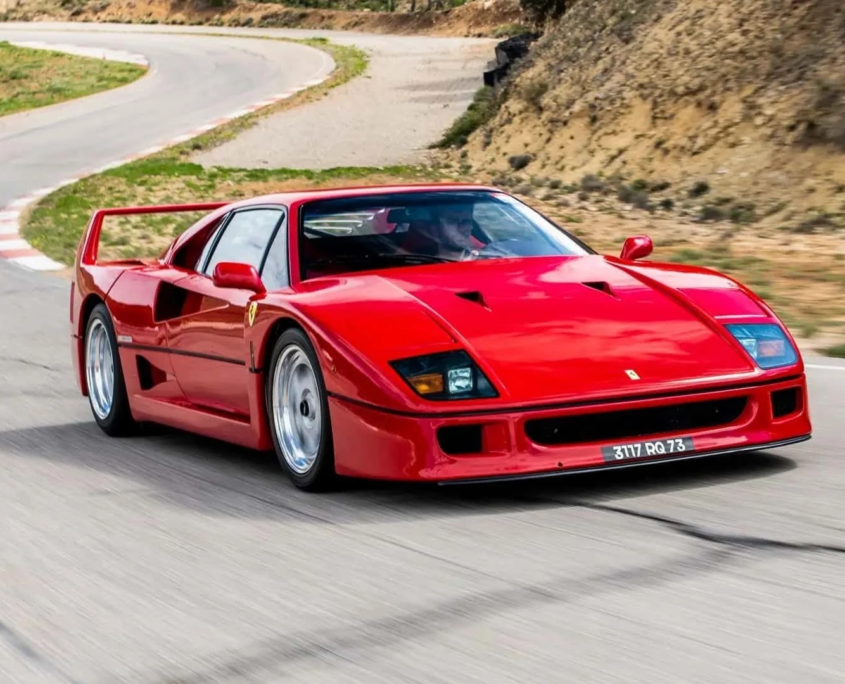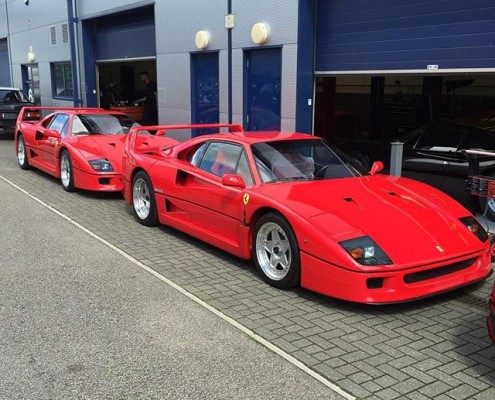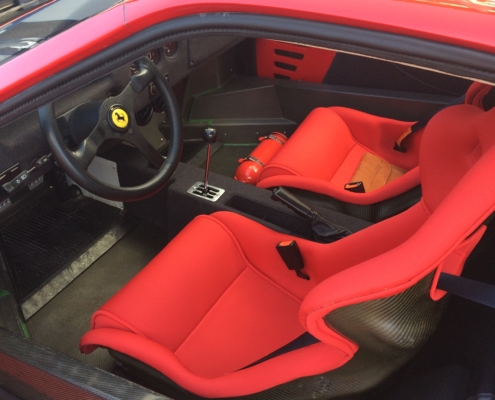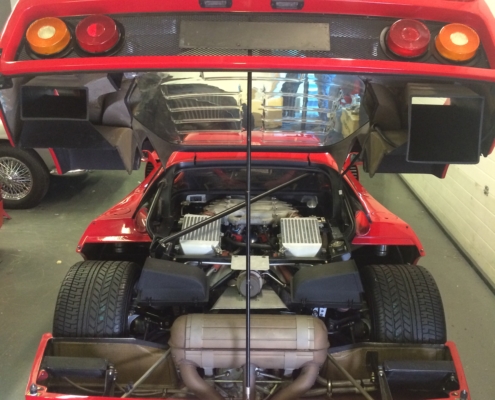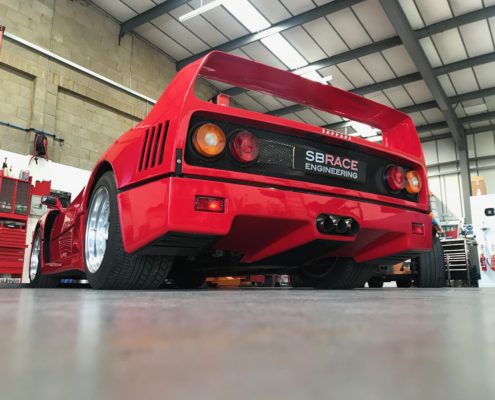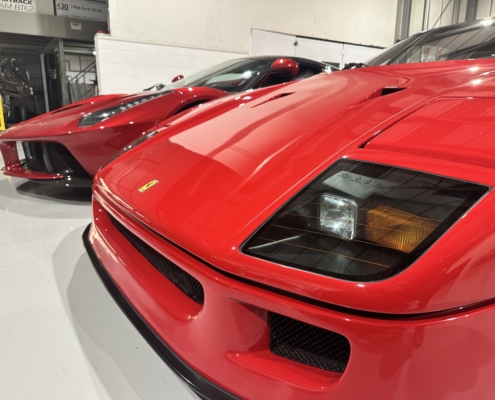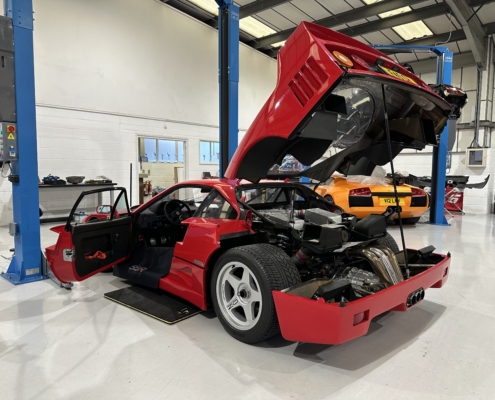1987 Ferrari F40
The Ferrari F40 is an iconic sports car produced by the Italian automaker Ferrari from 1987 to 1992. Here’s a brief history of the Ferrari F40:
Development and Launch
The F40 was developed to commemorate Ferrari’s 40th anniversary as a manufacturer and was designed to be the ultimate road-going sports car. The project was overseen by Enzo Ferrari himself. The car was officially unveiled to the public in July 1987 and made its debut at the Frankfurt Motor Show later that year.
Design and Engineering
The F40’s design, penned by Pininfarina, was influenced by its racing counterpart, the Ferrari 288 GTO. The car featured a lightweight body made primarily of carbon fiber and Kevlar, which contributed to its exceptional performance. It had a distinctive low-slung and aggressive stance with aerodynamic elements such as the large rear wing and air vents.
Engine and Performance
Under the rear deck of the F40 sat a 2.9-liter twin-turbocharged V8 engine. It produced an impressive 471 horsepower and 426 lb-ft of torque. The F40 was the first production car to break the 200 mph (322 km/h) barrier, with a top speed of 201 mph (324 km/h). It could accelerate from 0 to 60 mph (0 to 97 km/h) in just 3.8 seconds.
Limited Production
Ferrari initially planned to produce 400 units of the F40. However, due to high demand, a total of 1,315 F40s were built during its production run, exceeding the original target. Each car was meticulously hand-built in Maranello, Italy.
End of Production and Legacy
Production of the F40 ceased in 1992, making it the last car personally approved by Enzo Ferrari before his death in 1988. The F40 became an instant icon, known for its raw performance, distinctive styling, and the emotional connection it formed with enthusiasts.
F40 Collectibility and Value
Due to its limited production numbers, the F40 has become highly sought after by collectors and automotive enthusiasts. It is considered a prized possession among Ferrari aficionados, and well-maintained examples have appreciated significantly in value over the years.
The Ferrari F40 is widely regarded as one of the greatest supercars ever created, representing a landmark in automotive history and showcasing Ferrari’s dedication to performance and engineering excellence.
Ferrari F40 Technical Specifications
Year of Manufacture – 1987
| ENGINE | ||
| type | rear, longitudinal, 90° V8 | |
| bore/stroke | 82 x 69.5 mm | |
| unitary displacement | 367.03 cc | |
| total displacement | 2936.25 cc | |
| compression ratio | 7.7 : 1 | |
| maximum power | 351.5 kW (478 hp) at 7000 rpm | |
| power per litre | 163 hp/l | |
| maximum torque | 577 Nm (58.8 kgm) at 4000 rpm | |
| valve actuation | twin overhead camshafts per bank, four valves per cylinder | |
| fuel feed | Weber-Marelli electronic injection, twin turbos | |
| ignition | Weber-Marelli electronic, single spark plug per cylinder | |
| lubrication | dry sump | |
| clutch | twin-plate | |
| CHASSIS | ||
| frame | tubular steel and composites | |
| front suspension | independent, unequal-length wishbones, coil springs over telescopic shock absorbers, anti-roll bar | |
| rear suspension | independent, unequal-length wishbones, coil springs over telescopic shock absorbers, anti-roll bar | |
| brakes | discs | |
| transmission | 5-speed + reverse | |
| steering | rack-and-pinion | |
| fuel tank | capacity 120 litres | |
| front tyres | 245/40 ZR 17 | |
| rear tyres | 335/35 ZR 17 | |
| BODYWORK | ||
| type | two-seater berlinetta | |
| length | 4358 mm | |
| width | 1970 mm | |
| height | 1124 mm | |
| wheelbase | 2450 mm | |
| front track | 1594 mm | |
| rear track | 1606 mm | |
| weight | 1100 kg (dry) | |
| PERFORMANCE | ||
| top speed | 324 km/h (201 mph) | |
| acceleration 0-100 km/h | 4.1 sec | |
| 0-400 m | 11.9 sec | |
| 0-1000 m | 20.9 sec | |
Ferrari F40 Servicing
At SBR we have 30 over years experience with the F40 model. Our senior Technician has covered thousands of miles in these cars in the UK and Europe, giving us an intimate understanding of the legendary car.
We have carried out EVERY job possible on these iconic cars, and are one of a select few Ferrari specialists with this extensive knowledge.
Click Here for more information on servicing

